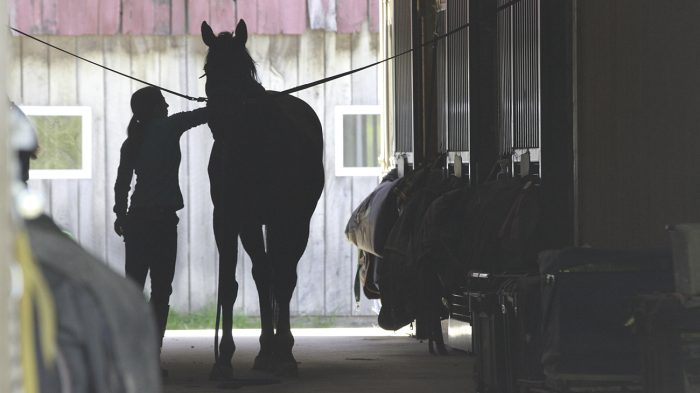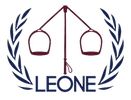We apply the adage that prevention is better than cure when it comes to keeping our human athletes safe by requiring all participants in U.S. Equestrian Federation competitions to complete SafeSport training. Our equine athletes deserve the same approach.
Every participant in USEF-recognized competition must complete an online SafeSport training course annually. The courses are designed to educate our community about best practices for preventing physical and sexual abuse in the sport—and rightly so. Any opportunity to prevent abuse in all its forms should be seized upon, rather than simply castigating the behavior after the fact. Education and prevention are more important than punishment.
The required training courses, run by the U.S. Center for SafeSport, focus on awareness and prevention of athlete abuse. They tackle thorny topics such as defining what constitutes an appropriate relationship between a coach and a minor pupil, and what behaviors are acceptable versus what crosses a line to harassment or abuse.
A similar equine SafeSport training program is needed for everyone in the industry—including trainers, riders, drivers, vaulters, owners and grooms.

The current SafeSport training establishes a common understanding of acceptable and unacceptable behaviors, and it illustrates appropriate interactions and conduct. It also provides information on where lines should be drawn, how to respond if they are crossed, and how and where to report concerns. Athlete SafeSport has been in effect for several years and has provided a common understanding about acceptable conduct.
Like children, horses do not have a voice in their care and are vulnerable to abuse or abusive practices. An equine SafeSport program would provide similar protection.
We do not have a simple, consistent method for handling possible horse abuse, investigating it and punishing offenders when it is found. Enforcement requires more than just stewards monitoring show grounds; it requires the whole community to participate.
Understanding what to report and where to report it can be confusing. We need to add a layer of education to protect competitors and horses by mandating an equine SafeSport course that clearly details acceptable behaviors and training methods appropriate for working with horses and how to report appropriate cases. It helps riders and trainers avoid training violations for the good of the horse and the public.
Different riders and trainers have their own ideas about acceptable parameters and what constitutes reasonable conduct. Different disciplines have their own training methods. It is not always obvious whether a training methodology is abusive or not. Accordingly, a consensus of where lines are drawn must be developed and communicated to all participants. It makes sense to have all equestrians on the same page.
Like athlete SafeSport, equine SafeSport for horses should be a mandatory annual online education course required for participation in USEF events. This would help competitors know what stewards are looking for and what behaviors or training practices are injurious to the horse.
Equine SafeSport would discuss the best practices on issues such as:
- Training aids: Outlining appropriate and inappropriate use of training devices such as whips, spurs and draw reins.
- Nutrition: Teaching requirements about proper hydration, nutrition and heat exhaustion.
- Longeing/exercise: Determining appropriate limits for longeing horses and riding per day.
- Suitability: Making sure the rider is suited to the horse.
These are just a few of the many training and horse care areas that an equine SafeSport course could address. It would help the equestrian community safeguard its horses and encourage public trust.
Abuse prevention is far better than justice after the fact. A mandatory equine SafeSport course prevents trainers and participants from pleading ignorance of unacceptable conduct. The best way to do that is to have a common understanding of the boundaries of acceptable training through a proactive system of education.
USEF should assemble a diverse, multi-discipline group to develop the equine SafeSport course similar to the athlete SafeSport program. This group should include athletes, trainers, stewards, judges, grooms, organizers and legal experts to create an engaging and interactive online course on training methods that incorporates instructional videos and an interactive format like the athlete SafeSport program. The course content could also be referenced to help further educate the public about our sport, including what constitutes proper training methods and what does not.
An equine SafeSport course would not only create a shared understanding among those inside the industry but would also serve as an educational resource for the general public. Equestrian sports are currently facing a crisis regarding their social license to operate, and we must work proactively to enhance public perception and enable our sport to thrive on the world stage. What better way to tackle it than by implementing a program that shows every athlete, groom, or handler how to engage with their horse respectfully and compassionately? It’s the strongest defense of our sport against its critics.
Positive and proactive steps to prevent horse abuse should be taken through the education of our community and the establishment of agreed-upon training and care standards. An annual mandatory equine SafeSport program that all participants must complete to enter a USEF competition is needed. We would be providing a genuine service to our equine partners by improving their welfare and also to our sport by helping people better understand and trust that what they are seeing on the field of play is geared toward protecting the horse’s wellbeing at all times.
